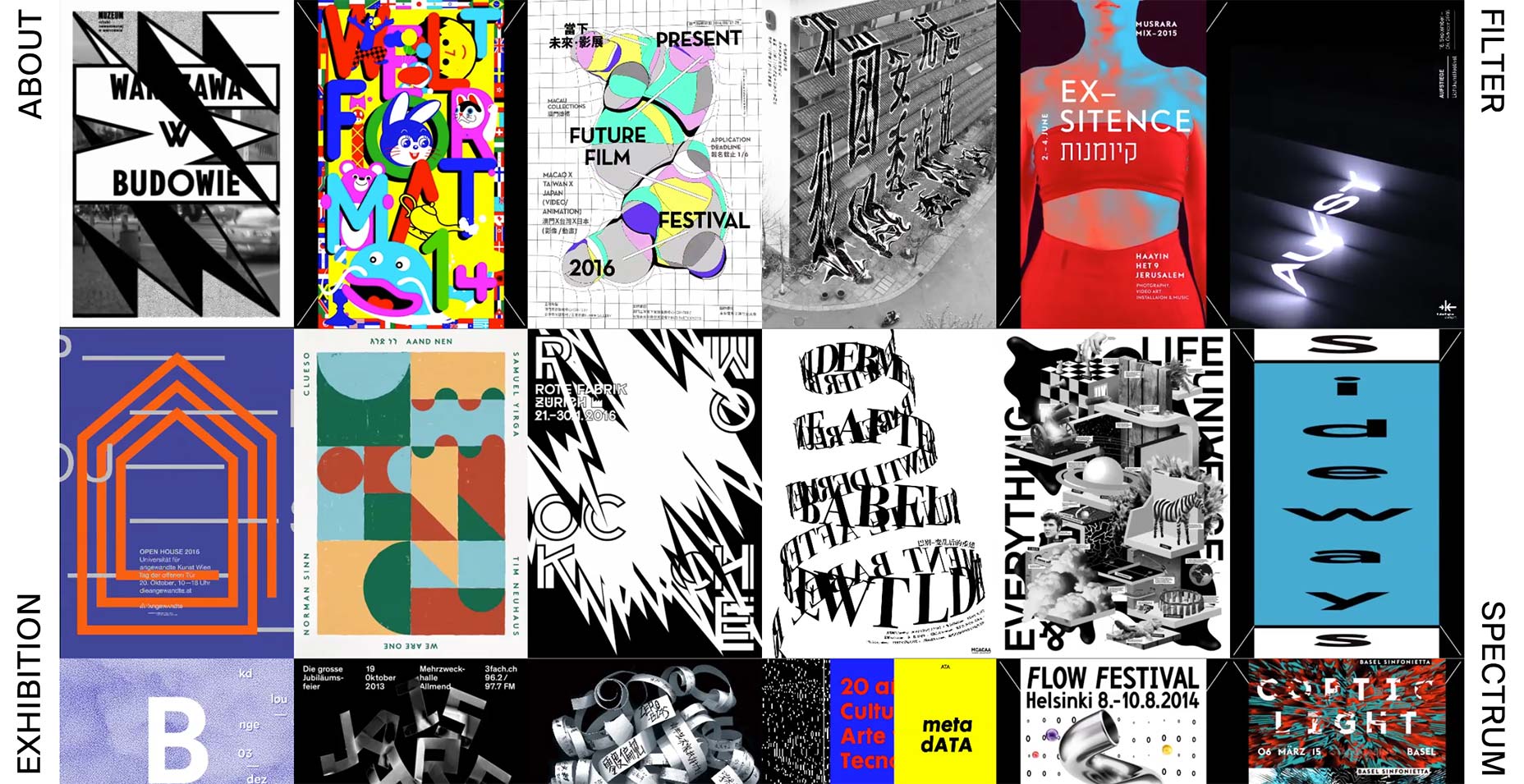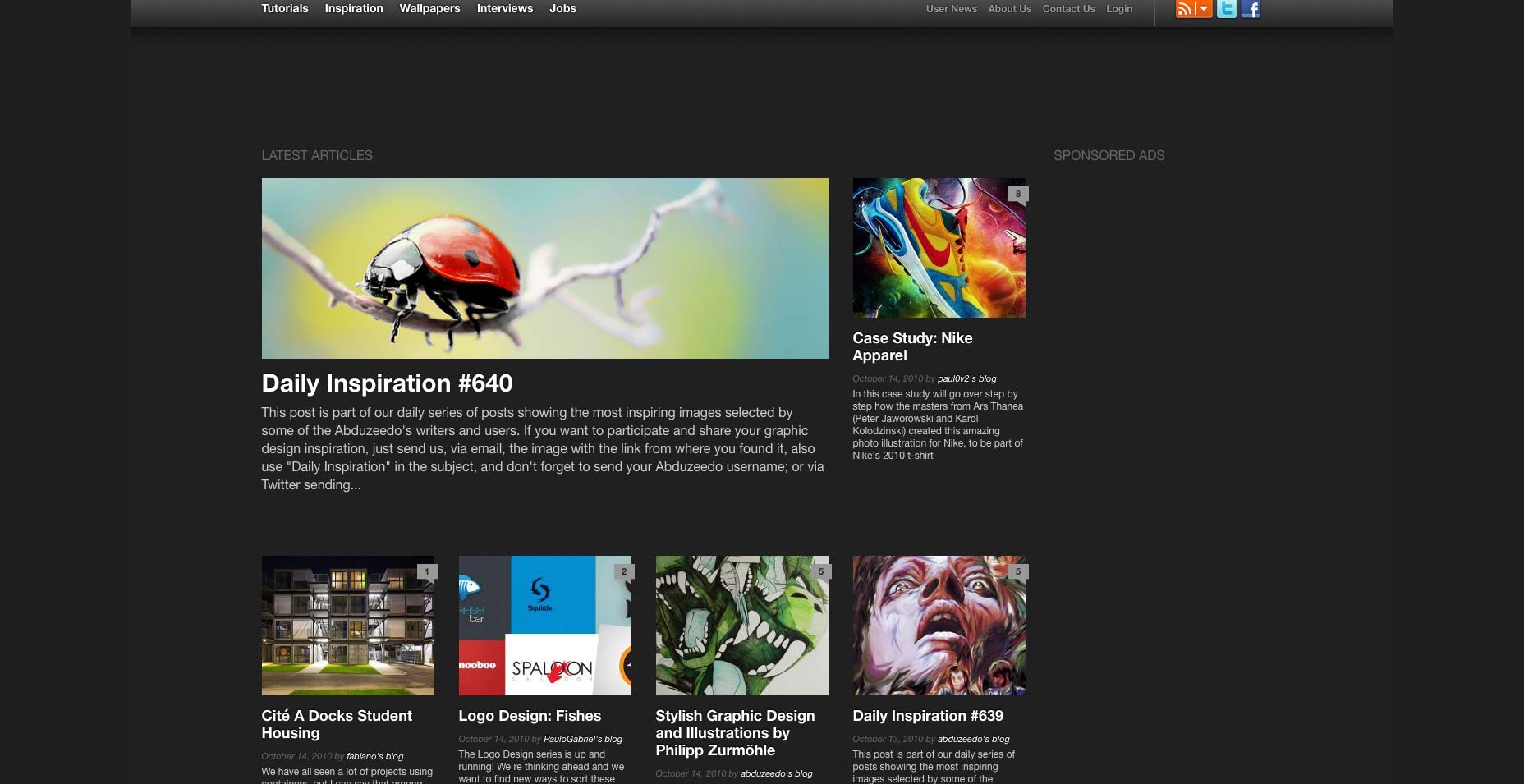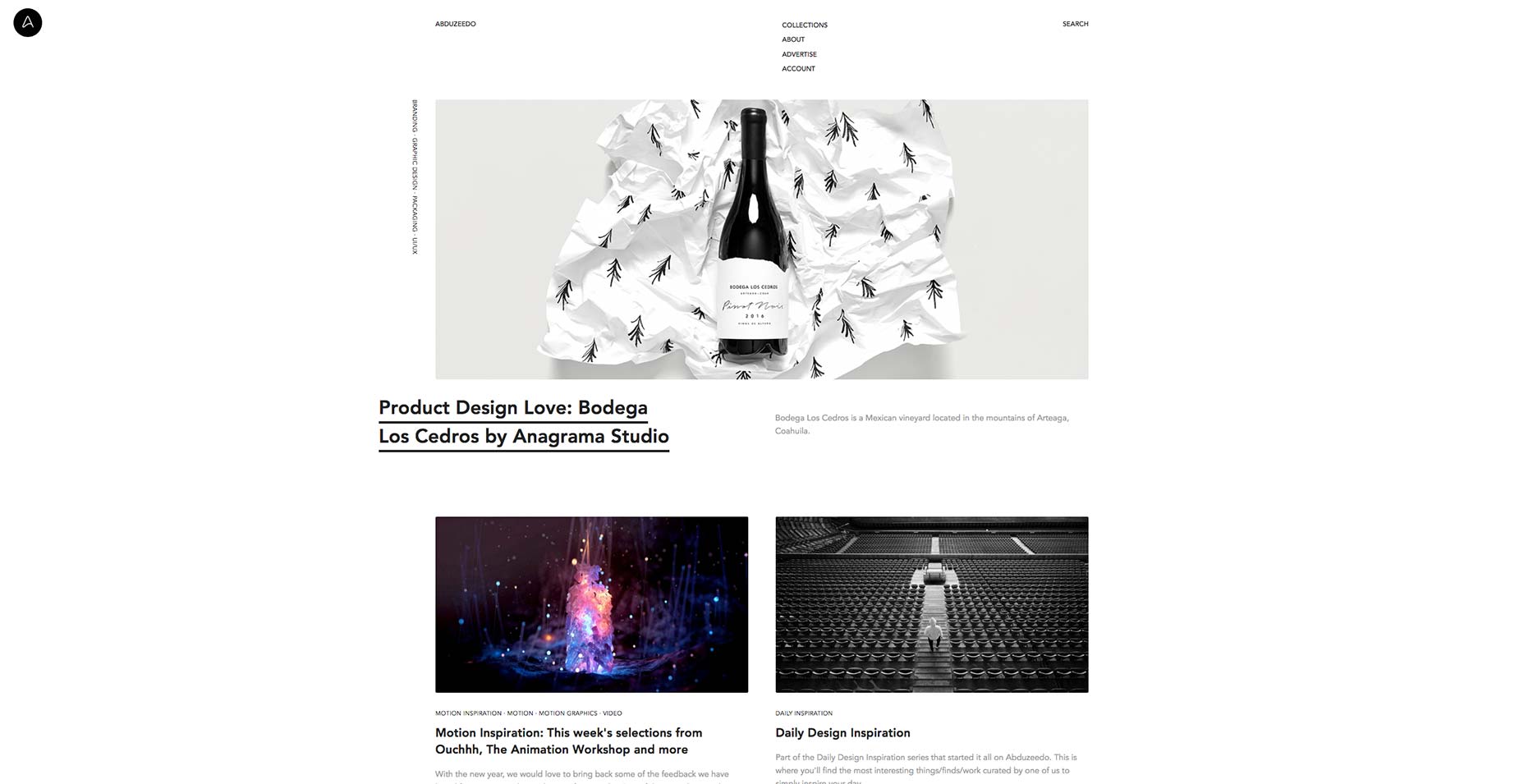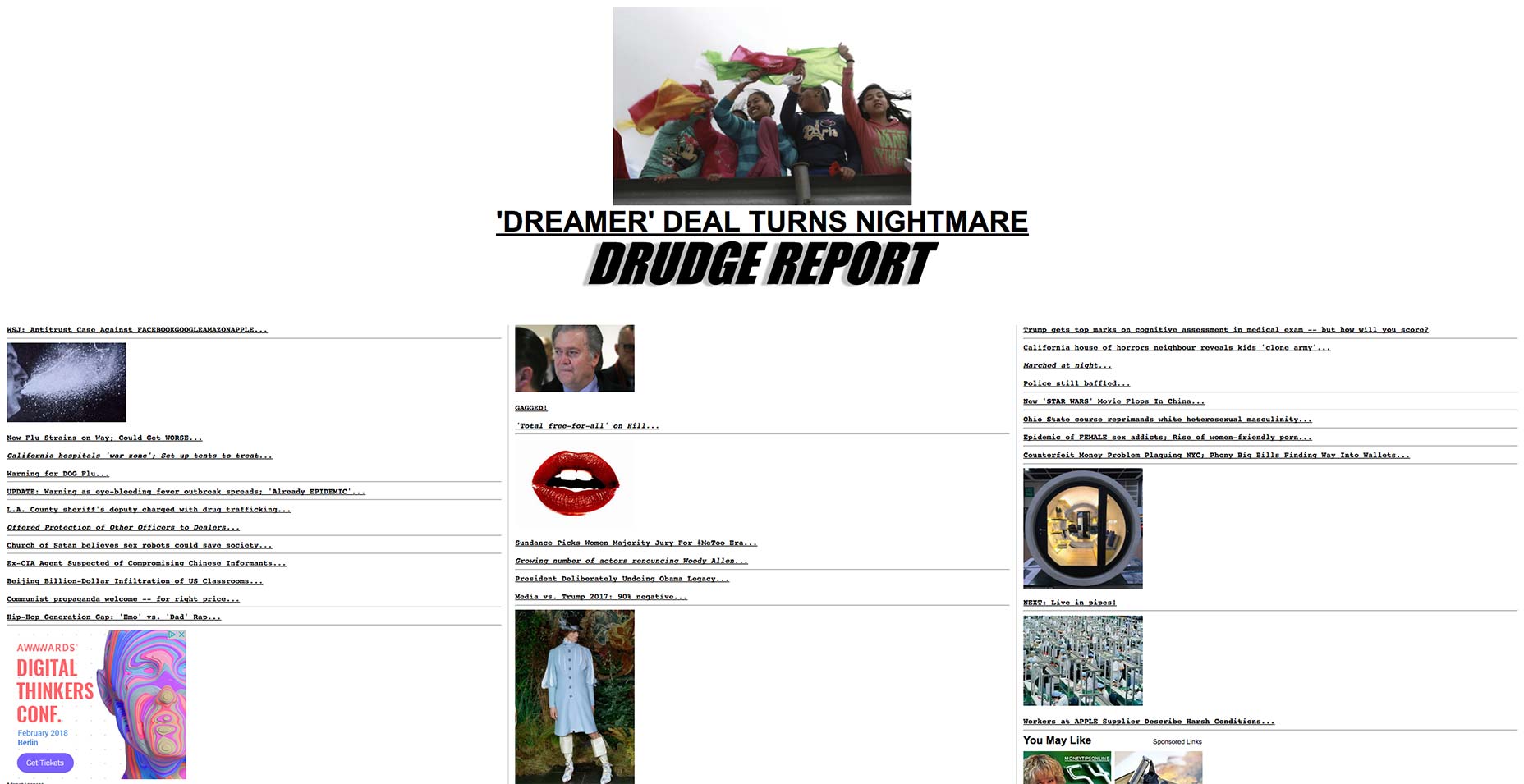Should You Follow Design Trends?
Trends often do little to push design forward or improve user experience

 The question therefore presents itself as to why trends exist. It’s not to push an industry forward, nor is it to improve the final output for users, whether it be in fashion or web design. Why trends exist is to maintain visual interest, not just for consumers and clients, but for the designers themselves too.
If we take web design as a case study for trends, we can see that we have essentially stripped websites back of their detailing. While currently this is visually appealing, since it’s on-trend, it actually does little to improve the experience for the end user. This is the website design for Abduzeedo in 2010, via the Wayback Machine.
The question therefore presents itself as to why trends exist. It’s not to push an industry forward, nor is it to improve the final output for users, whether it be in fashion or web design. Why trends exist is to maintain visual interest, not just for consumers and clients, but for the designers themselves too.
If we take web design as a case study for trends, we can see that we have essentially stripped websites back of their detailing. While currently this is visually appealing, since it’s on-trend, it actually does little to improve the experience for the end user. This is the website design for Abduzeedo in 2010, via the Wayback Machine.
 And here is Abduzeedo in 2018. It follows a number of popular trends; from ridding of any design detailing such as gradients, to replacing key elements like search with less-intuitive solutions.
And here is Abduzeedo in 2018. It follows a number of popular trends; from ridding of any design detailing such as gradients, to replacing key elements like search with less-intuitive solutions.
 Is it more usable, or simply more on-trend? It’s harder to scan the latest article posts, more difficult to understand the content hierarchy, and lacking the wonderful, contrasting design visuals and details included in the earlier version.
Abduzeedo is not alone in its reductionist techniques, and similar transitions have occurred across the majority of websites over this period. But what if it had simply remained the same? I can’t speak for other Abduzeedo loyalists, but for me a great design is near-timeless, even in such a fast-paced industry.
Some sites have indeed remained the same over long periods. They have found a structure and design language which resonates with users’ needs. Rather than chopping and changing as the trends grow and subside, they stay firm, trusting in their design decisions and reasoning behind them. An excellent example is The Drudge Report.
Is it more usable, or simply more on-trend? It’s harder to scan the latest article posts, more difficult to understand the content hierarchy, and lacking the wonderful, contrasting design visuals and details included in the earlier version.
Abduzeedo is not alone in its reductionist techniques, and similar transitions have occurred across the majority of websites over this period. But what if it had simply remained the same? I can’t speak for other Abduzeedo loyalists, but for me a great design is near-timeless, even in such a fast-paced industry.
Some sites have indeed remained the same over long periods. They have found a structure and design language which resonates with users’ needs. Rather than chopping and changing as the trends grow and subside, they stay firm, trusting in their design decisions and reasoning behind them. An excellent example is The Drudge Report.
 It’s not following a minimalist or brutalist design trend. It has looked like this for the best part of two decades. Users of the site love the simplicity and consistency of the design. In an industry defined by cluttered news websites with breaking news alerts, The Drudge Report has taken a step back from the race for user’s attention and stayed true to its original purpose.
[pullquote]Much of it can be traced to boredom[/pullquote]
Of course there are exceptions over this time, namely with the way trends contribute to design systems like Material Design, which continues to develop a current and user-friendly design language for all to use and benefit from. It’s implemented throughout Google’s products, improving user experience through well-defined user interface assets and consistency. But on the whole, design trends are largely about tweaking styles continuously to provide something new to users, consumers, clients, and designers that is fresh and unique. Much of it can be traced to boredom, not just from consumers, but designers too. Who wants to enter a creative industry and turn out the same style app designs, or websites, time and time again? Cityscapes, computers, the web, mobile apps, clothing, they’d all be samish, and lacking in a great deal of emotion or feeling. Not to mention, a market economy is built upon companies continuing to present new products and new designs, regardless of how good an existing one is.
Designers have to consider whether trends are a primary consideration, or whether the user experience should define the styles and direction. This largely comes down to the sub-industry and whether a design is primarily visual or user-orientated. Aspects such as logo or poster design have much greater scope to follow these trends.
Digital product design should always place the user experience over conforming to trends. In many ways trends should be entirely redundant in these cases and have little-to-no influence on design decisions.
It’s not following a minimalist or brutalist design trend. It has looked like this for the best part of two decades. Users of the site love the simplicity and consistency of the design. In an industry defined by cluttered news websites with breaking news alerts, The Drudge Report has taken a step back from the race for user’s attention and stayed true to its original purpose.
[pullquote]Much of it can be traced to boredom[/pullquote]
Of course there are exceptions over this time, namely with the way trends contribute to design systems like Material Design, which continues to develop a current and user-friendly design language for all to use and benefit from. It’s implemented throughout Google’s products, improving user experience through well-defined user interface assets and consistency. But on the whole, design trends are largely about tweaking styles continuously to provide something new to users, consumers, clients, and designers that is fresh and unique. Much of it can be traced to boredom, not just from consumers, but designers too. Who wants to enter a creative industry and turn out the same style app designs, or websites, time and time again? Cityscapes, computers, the web, mobile apps, clothing, they’d all be samish, and lacking in a great deal of emotion or feeling. Not to mention, a market economy is built upon companies continuing to present new products and new designs, regardless of how good an existing one is.
Designers have to consider whether trends are a primary consideration, or whether the user experience should define the styles and direction. This largely comes down to the sub-industry and whether a design is primarily visual or user-orientated. Aspects such as logo or poster design have much greater scope to follow these trends.
Digital product design should always place the user experience over conforming to trends. In many ways trends should be entirely redundant in these cases and have little-to-no influence on design decisions.
Read Next
15 Best New Fonts, July 2024
Welcome to our monthly roundup of the best fonts we’ve found online in the last four weeks. This month, there are fewer…
By Ben Moss
20 Best New Websites, July 2024
Welcome to July’s round up of websites to inspire you. This month’s collection ranges from the most stripped-back…
Top 7 WordPress Plugins for 2024: Enhance Your Site's Performance
WordPress is a hands-down favorite of website designers and developers. Renowned for its flexibility and ease of use,…
By WDD Staff
Exciting New Tools for Designers, July 2024
Welcome to this July’s collection of tools, gathered from around the web over the past month. We hope you’ll find…
3 Essential Design Trends, July 2024
Add some summer sizzle to your design projects with trendy website elements. Learn what's trending and how to use these…
15 Best New Fonts, June 2024
Welcome to our roundup of the best new fonts we’ve found online in the last month. This month, there are notably fewer…
By Ben Moss
20 Best New Websites, June 2024
Arranging content in an easily accessible way is the backbone of any user-friendly website. A good website will present…
Exciting New Tools for Designers, June 2024
In this month’s roundup of the best tools for web designers and developers, we’ll explore a range of new and noteworthy…
3 Essential Design Trends, June 2024
Summer is off to a fun start with some highly dramatic website design trends showing up in projects. Let's dive in!
15 Best New Fonts, May 2024
In this month’s edition, there are lots of historically-inspired typefaces, more of the growing trend for French…
By Ben Moss
How to Reduce The Carbon Footprint of Your Website
On average, a web page produces 4.61 grams of CO2 for every page view; for whole sites, that amounts to hundreds of KG…
By Simon Sterne
20 Best New Websites, May 2024
Welcome to May’s compilation of the best sites on the web. This month we’re focused on color for younger humans,…














